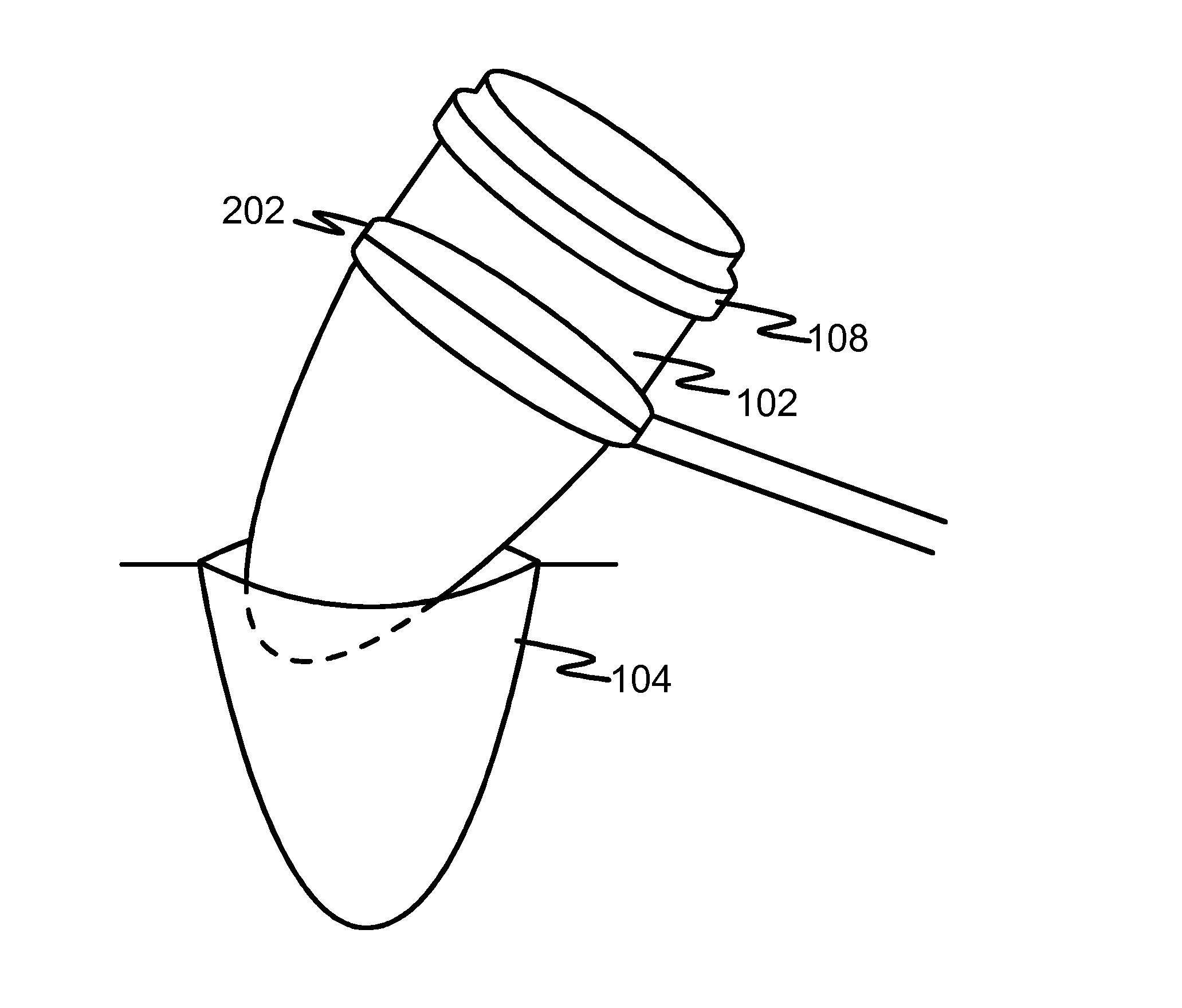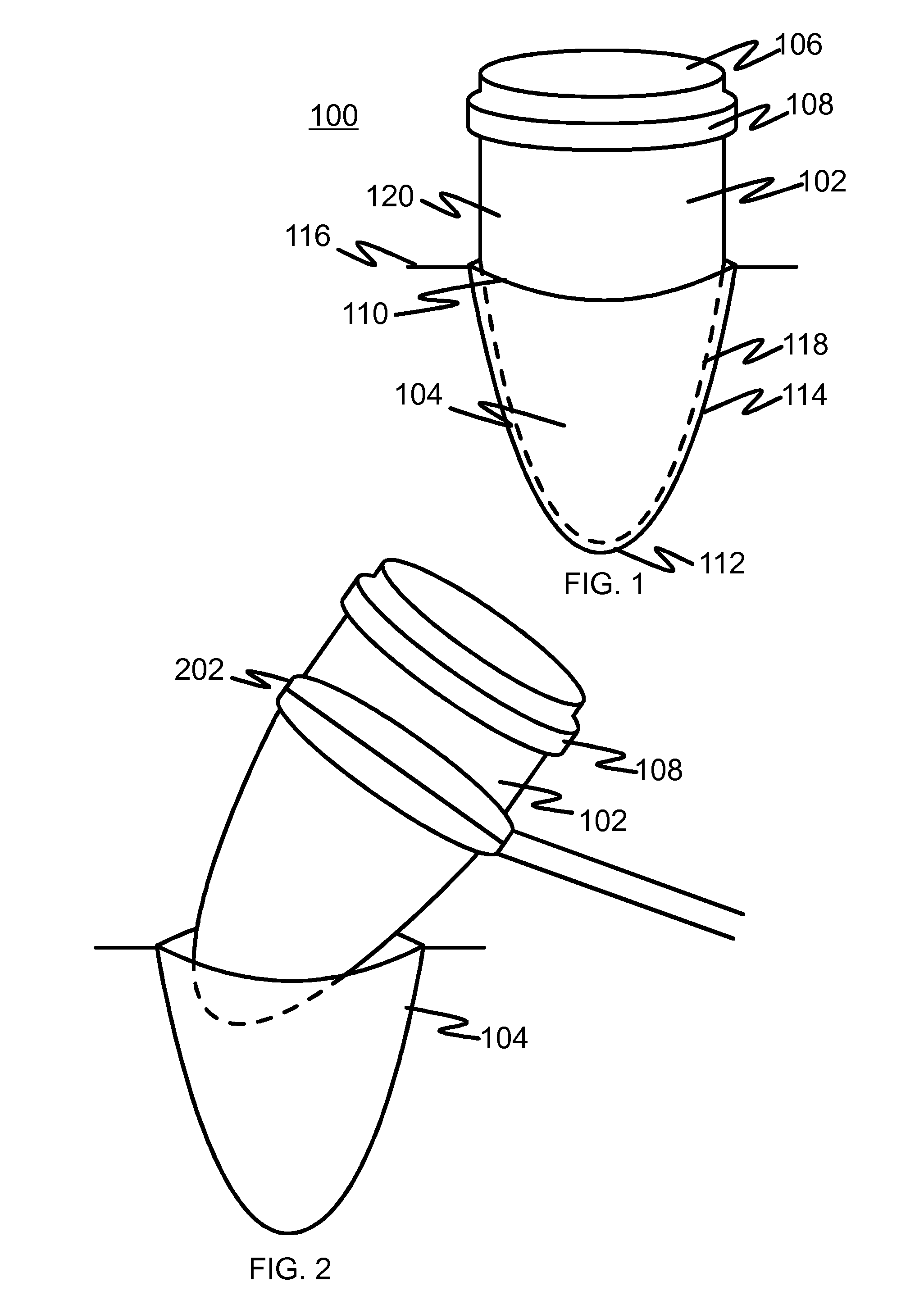Deep refuse container
a deep, refuse technology, applied in the field of refuse containers, can solve the problems of time-consuming and thus expensive process of refuse collection, frequent emptying cycles, etc., and achieve the effects of reducing the required emptying frequency of refuse containers, saving time and space, and increasing volum
- Summary
- Abstract
- Description
- Claims
- Application Information
AI Technical Summary
Benefits of technology
Problems solved by technology
Method used
Image
Examples
Embodiment Construction
[0022]FIG. 1 illustrates a side view of a deep refuse container in use according to an embodiment of the present invention. The deep refuse container 100 of the present invention comprises a body part 102 and a frame part 104. The body part 102 comprises at least one inner space 106 for garbage and at least one contact part 108 for automated emptying means. The frame part 104 comprises an open upper end 110, a lower end 112 and at least one side 114 for supporting the body part 102.
[0023]When in use, the frame part 104 is disposed below the ground level 116 so that the upper end 110 of the frame part 104 is substantially at the same level with the ground level 116 or above the ground level 116. The body part 102 is disposed into the frame part 104 so that a lower portion 118 of the body part 102 locates inside the frame part 104 and an upper portion 120 of the body part 102 locates above the frame part 104.
[0024]The frame part 104 of the present invention can be made of any suitable...
PUM
 Login to View More
Login to View More Abstract
Description
Claims
Application Information
 Login to View More
Login to View More - R&D
- Intellectual Property
- Life Sciences
- Materials
- Tech Scout
- Unparalleled Data Quality
- Higher Quality Content
- 60% Fewer Hallucinations
Browse by: Latest US Patents, China's latest patents, Technical Efficacy Thesaurus, Application Domain, Technology Topic, Popular Technical Reports.
© 2025 PatSnap. All rights reserved.Legal|Privacy policy|Modern Slavery Act Transparency Statement|Sitemap|About US| Contact US: help@patsnap.com


